10 Moments That Defined Urban Malaysian Music
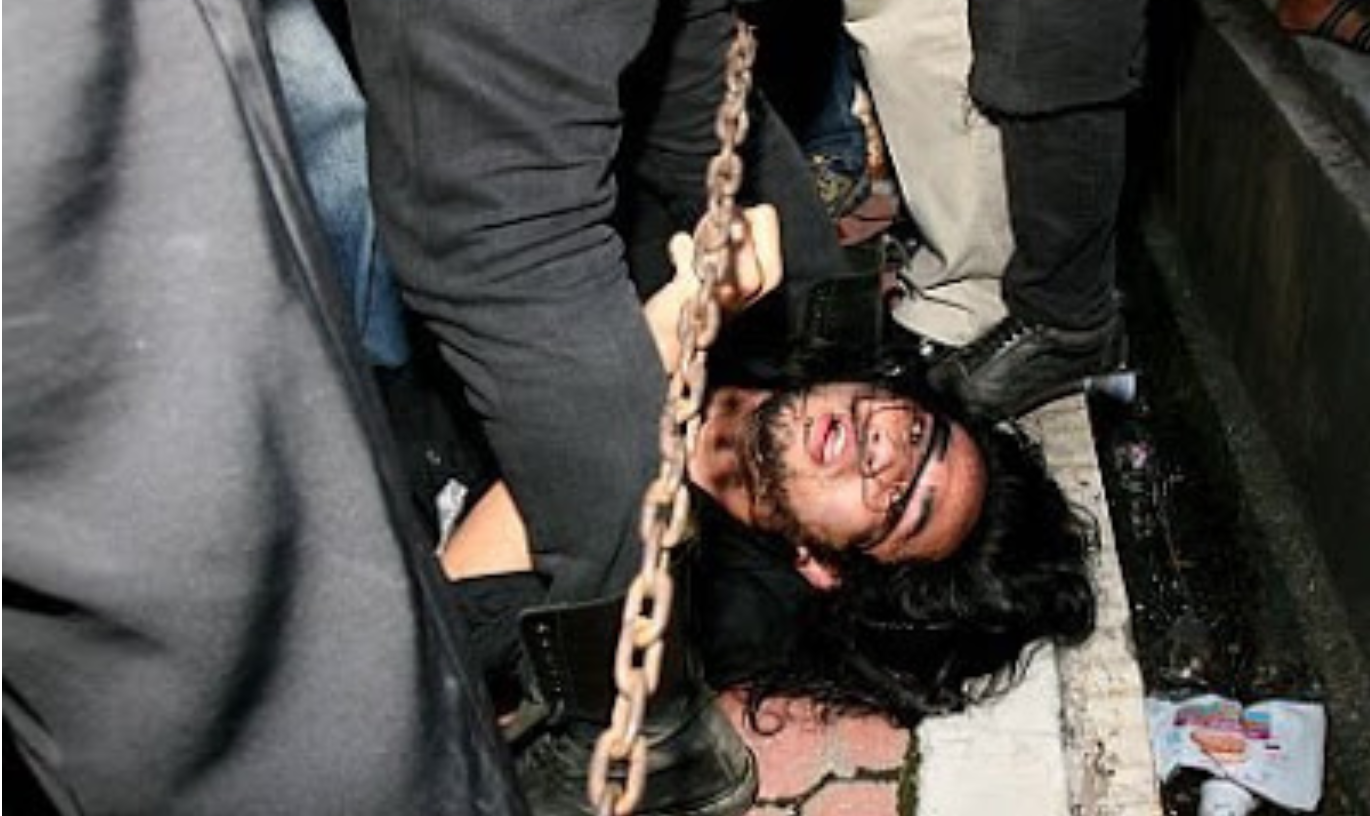 Thirsty for JUICE content? Quench your cravings on our Instagram, TikTok and WhatsApp
Thirsty for JUICE content? Quench your cravings on our Instagram, TikTok and WhatsApp
20 years ago the most exciting thing happening in the Malaysian music scene was a Scorpians rock concert. Fast forward to today and the scene is maelstrom of activity: hip hop battles are happening in hole-in-the-wall joints, local bands are storming the stage live alongside international acts like NERD, Korn and soon Kasabian, and you’re as likely to hear a song or watch a video by a local artiste on mainstream radio and TV as you are one by an international act. The local music scene has never been more alive or fiercely kicking.
August 31st marks 52 years or independence and while the debate about teaching Science and Maths in English in schools here continues, for Malaysia’s musical youth, 1Malaysia is just not political rhetoric as the walls that separate Malay, Chinese and even Tamil languages’ contemporary music fronts continue to crumble as fans seek common ground in a scene that is increasingly crossover in nature. JUICE is as likely to be humming a Hujan track as we are to be seen front row at a Nao gig. We’re as excited to be bobbing along to Jin Hackman as he belts out his lines as we are to cop a listen of a new Jay-Z track.
The journey to this point has been a struggle filled with high points and controversy. JUICE charts 10 revolutionary moments that leads us here and the music freedom fighters that went to the line.
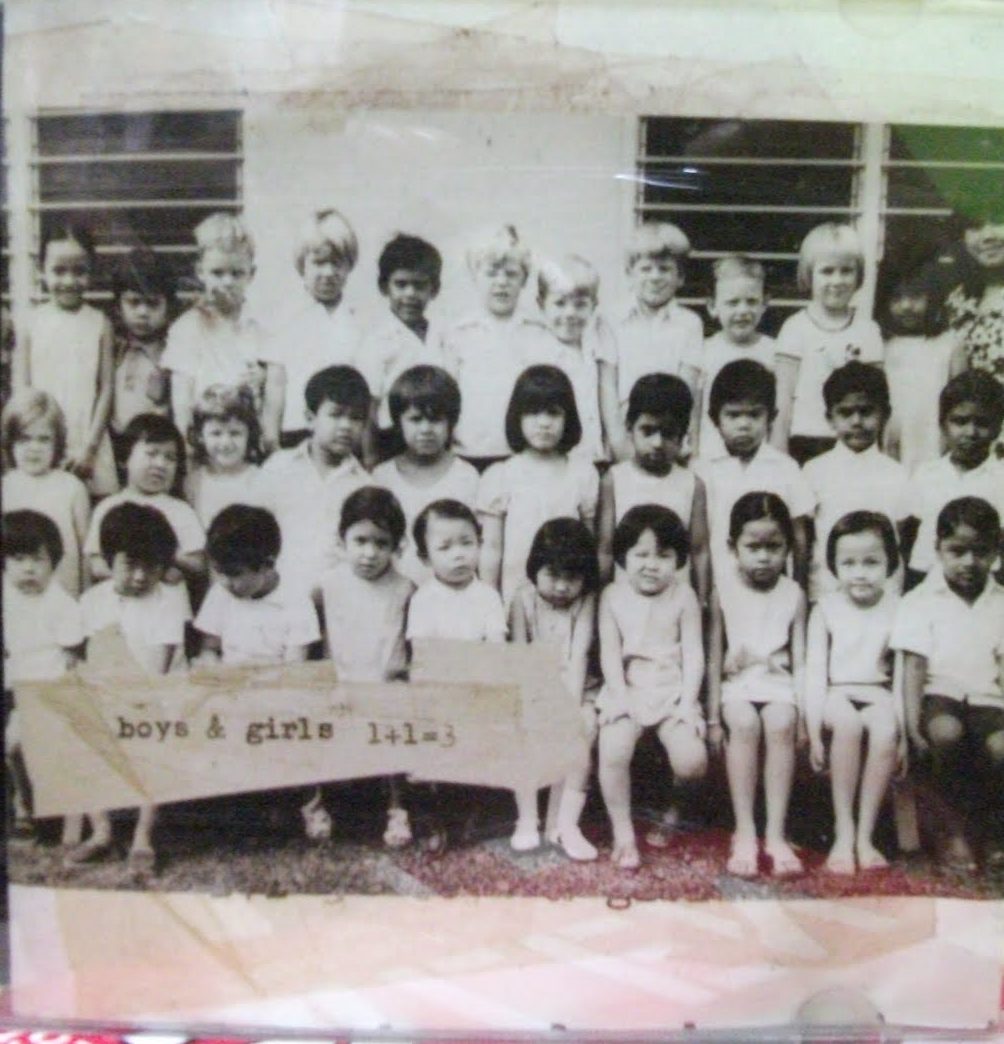
#1 Positive Outlook
Created in 1993 by Jeff Siah and Kenny Tay, Positive Tone’s first ever release was Leonard Tan’s first album. But it wasn’t until Ahmad Izham Omar and Paul Moss from One In A Million joined that Positive Tone sprouted wings. Focused on producing music that was more progressive – OAG, Poetic Ammo, Innuendo, Nita, Brodwyn (which later became Juliet The Orange), Ferhad, Ruffedge, VE, Too Phat, John’s Mistress, Rabbit, Pop Shuvit, Deanna Yusoff, Sarimah, Liza Aziz and Reefa were all Positive Tone artists.
There were other indie labels out there doing things DIY-style, but Positive Tone reached out to the masses. Positive Tone’s goal was to give everyone in Malaysia a chance to listen to the urban music local boys and girls were making. Izham explained, “We did all this because our hearts were in it. It’s not just a business, but it’s a mission. We all felt strongly that we needed to inject more urban sounds into the Malaysian music industry. So when it became a mission, we went above and beyond to achieve it.”
When Izham wanted to release OAG, questions flew. “It’s in English?! What’s this thing called Alternative? And they are only 16? Who will play their music? Where can we stock their CDs in the shops?” There was no place or space for Malaysian artistes making music in English.
Positive Tone ignored the infrastructure of the industry. “We decided to bypass the system. We went straight to the public. We gave out flyers, did underground gigs, e-mailed. We had no choice,” Izham said. Constantly broke at one point, he recalls his wife asking him to get a real job. But OAG went triple-platinum and Positive Tone became unstoppable. It was a breath of fresh air – local music with edge.
In 1998, the label was sold to EMI, but Izham continued running it until 2003. EMI decided that all Positive Tone artistes should carry the EMI logo, hence the Positive Tone logo began disappearing from all the releases. Ironically the last album EMI released before closing down their operations in Malaysia was the Best of Positive Tone.
But Positive Tone’s spirit has never left, at least according to Izham who believes that “there will always be a way” even when you’re the little guy.
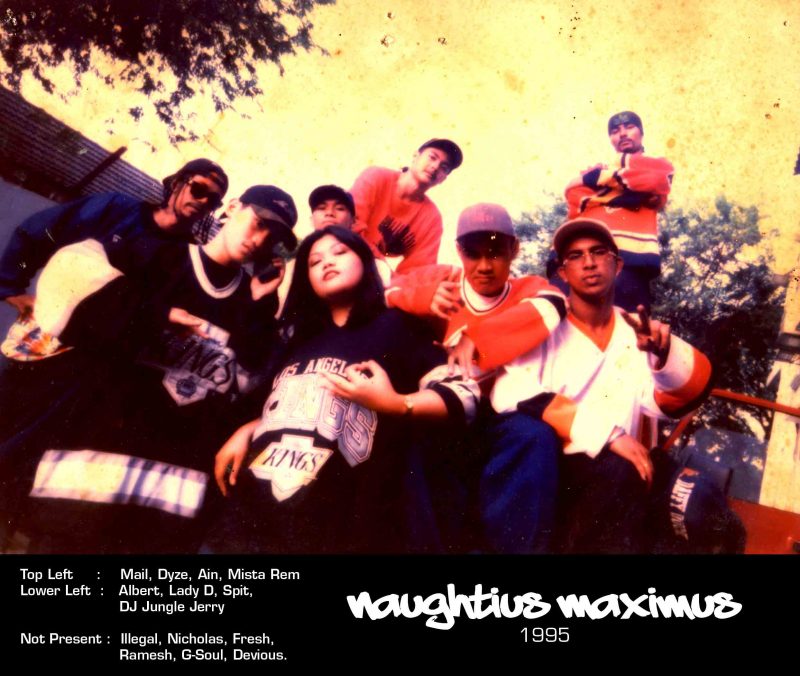
#2 Naughtius by Nature
Rap and hip hop in the Malay music scene was pretty much a comical affair with the likes of 4U2C, KRU and Nico. It wasn’t until the monstrous 13-member squad called Naughtius Maximus arrived that people started taking the localised version of the genre seriously.
Formed in early 1994, Naughtius Maximus was Malaysia’s first English hip hop collective with members from diverse backgrounds and former groups Ruffugeez, Whyness, Deceased and Under Pressure. Ruffugeez members met other NM founding-members in the now-defunct DV8 club, and then met Jungle Jerry at Monkey Bar when he was a resident DJ there.
Naughtius Maximus had a younger mass fanbase. First Lady of r’n’b Laydee explained, “We noticed that peeps from outside of KL appreciated us more because back then you didn’t have any access to YouTube or websites, so when peeps got wind of Nottimax performing at a specific venue, they’d get down to wherever we were, that’s how much love we got back in the day.”
With only one album released in 1995, and whole lotta buzz, they managed to squeeze a number of appearances on TV and radio on programmes such as Remaja, Muzik Muzik and the Metro Chart Show. There was plenty of print-coverage for Naughtius Maximus despite the ban from RTM (which ironically accused them, in a letter sent to Nottimax’s label Articulate Records, of being too “westernised”.)
In the end, it was hard to get everyone to come together to perform with busy study and work schedules, so the collective just went their separate ways. Dee recalled, “It was tough and eventually many of us felt we were pulling more weight than others, so one by one they left to pursue studying abroad and concentrate on their own careers. Then there are others who pursued personal projects of their own such as Mo, Illegal, Jungle Jerry, Nicky C. The latter 2 became local dance music’s early pioneers.”
Yet it’s undeniable : Naughtius Maximus opened a big door for the hip hop scene in Malaysia. And the acts that followed like Too Phat and Teh Tarik Crew owe a debt of gratitude to the original squad for clearing up the initial jungle to pave the way for Malaysian hip hop.
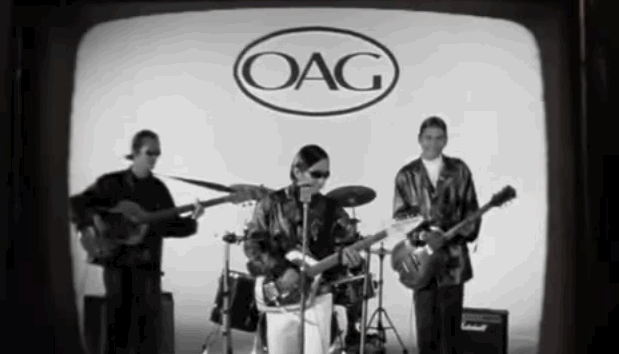
#3 Video For TV
Back in ’94, grunge and the so-called alternative music movement were at the peak of their popularity. Thus the winds of change were slowly turning into hurricanes of revolution; we could feel it, but still, no one saw it coming until we heard Radhi whisper the line, “This song is called…”
A new band called Old Automatic Garbage (OAG) recorded a demo tape and sent it to producer Paul Moss of the fresh indie label Positive Tone. They were signed immediately.
Less than a year later, OAG’s self-titled debut album and single ’60s TV’ were simultaneously released. The band performed ’60s TV’ live for the first time on the Metro Chart Show on new TV station MetroVision. After fanning well with the station’s ratings, a music video for the single was released.
The quirky video featured an odd couple watching OAG playing on their television set in a decrepit house full of vermin and other random things. Through flashes of live performances and clippings of old P.Ramlee movies, the song came alive and sparked the birth of ’90s indie bands in Malaysia with other acts of the time like Butterfingers, Dead Mushrooms, Nice Stupid Playground, Intoxicated; and the late-90s bands like Seven Collar Tee Shirt, Prana and Lyme that followed.
It was the first time an English-singing alternative rock band received such tremendous support. The band went on to win the Best New Artist category in the Anugerah Industri Muzik (AIM) Awards in 1996 and ’60’s TV’ was also nominated for the Best Video category.
OAG is noted for breaking away from the mainstream music stylings of their Malay rock predecessors – rock jiwang and rock kapak/kangkang which in term were inspired by ’80s powerhouse rock. By bringing the underground and indie into the spotlight, they inspired our local Gen Xers to pick up guitars and form bands. ’60s TV’ marked a change in direction for local music videos and became the benchmark for creativity, albeit reflecting certain elements of ’90s slackerdom.
Together with the talented roster of acts on Positive Tone, the new wave of musicians arrived on the scene and ultimately flushed away the outdated artistes of the past. That is until the internet picked up and the throngs of new artistes inspired by the ’90s movement came about… but that’s another song for another generation.

#4 Rumble in the Jungle
12 years ago, a bunch of world music enthusiasts decided to throw a party-cum-concert at the Sarawak Cultural Village. Going back to nature, the underlying goal for the event was to promote tourism and raise environmental awareness.
Within 2 years of its conception, the Sarawak Tourism Board took over planning duties and expanded the idea. Today, the Rainforest World Music Festival boasts an attendance of 30,000 people over the course of its 3 days and is one of the biggest and longest-running festivals in the region.
Nestled against the base of the legendary Mount Santubong, the Sarawak Cultural Village is as much reason for a person to go as the musical performances themselves. It is now a ‘living museum’ with volunteers from every ethnical group in Sarawak putting on performances at the site.
“It’s hard to believe that the initial turnout was barely 200 people. But it was exciting and very experimental,” quipped Deepak Gill a blogger who has been there since the start. Like many others, Deepak has fond memories of the first instalment of the festival and has not missed a single one after.
Over the years, many spellbinding local and international acts have graced the stages. They include M. Nasir, Ramli Sarip, Joey Ayala – a hippie folkster from the Philippines, Mongolian-Russian throat-singing trance group Huun-Huur-Tu and Malines Issa Bagayogo aka Issa Techno. There was even an exiled African tribe ensemble that came from India called Sidi Goma.
However, ask anyone today about the Rainforest Festival and they’ll probably tell you that it’s getting a bit over-commercialised. “Back in the day when it first started, there was no security. I remembered halfway through the performance, a guy leaped up onstage and started acting like he was conducting the band. Later we found out that the guy was actually part of the security team! Yeah, tuak was easier to get back then as well,” reminisced Deepak. “It might have been the novelty of it – there were plastic chairs in front of the stage – but it was real. No huge corporate sponsors. Just you, the music and the forest. What else could you ask for?”
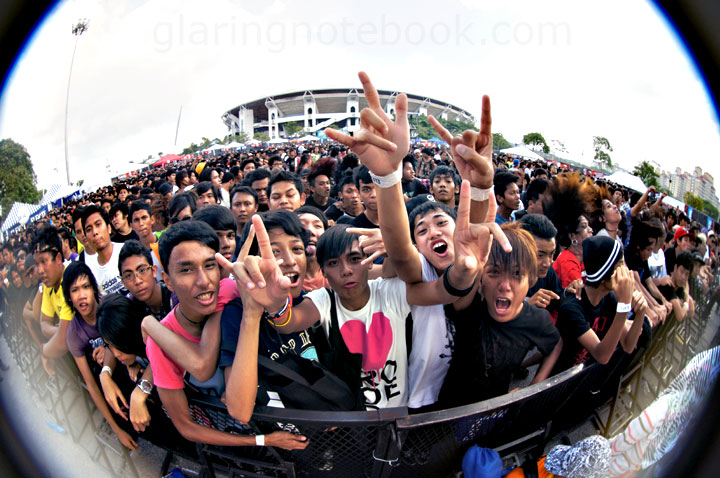
#5 J Lo Rocks The World
By the turn of the millennium, the local band scene was thriving with new acts ready to take on the world. Corporations started taking notes and eventually began aligning their brands with this movement in a bid to capture the ever fickle youth market.
With the success of his self-financed Days Without Dawn debut, local solo singer-songwriter Jason Lo put his business skills to good use and organised Rock The World – a massive free concert in the car park of 1 Utama shopping mall.
Sponsored by Panasonic, the concert saw more than 15,000 people rocking away to the tunes of local bands such as Lyme, Butterfingers, Juliet The Orange and John’s Mistress. On the concert day itself, bad weather conditions delayed the show for a more than a few hours.
“I thought it was all over. When the rain subsided it was about 5pm, the venue was still empty. Then we heard that McDonalds had run out of food because there were thousands of people waiting out the rain inside 1 Utama. Then they came. 15,000 people easily,” Lo remembered.
The show went on without much hassle after that and the new generation of concert goers displayed their own flair in supporting the bands – beach balls and toilet rolls flew overhead as screams of excitement came from every direction.
As for the performers, the highlight of the day was now-defunct nu metal band Lyme. In the middle of one of their songs, vocalist Xavier broke into a rant about death: “…there’s something not you, not me, not even f*cking Panasonic can escape from… And that’s DEATH!!!” The band ended their explosive set with Xavier stage diving across the barricade into the audience with microphone in hand.
In conclusion, Lo remarked, “It was a massive concert and marked the beginning of an annual music festival which celebrates all kinds of rock music from local musicians. Over the years, Rock The World has grown, evolved, moved into stadiums, seen the best bands in Malaysia come and go, and witnessed the best crowd surfing. Every year it’s slightly different. Every year inspires new bands to be born, old bands to revamp themselves and dare we say it, inspires more similar events to happen?”
So who’s going to be playing at Rock The World 9 this year, you may ask? Lo answered simply by saying, “You are.”
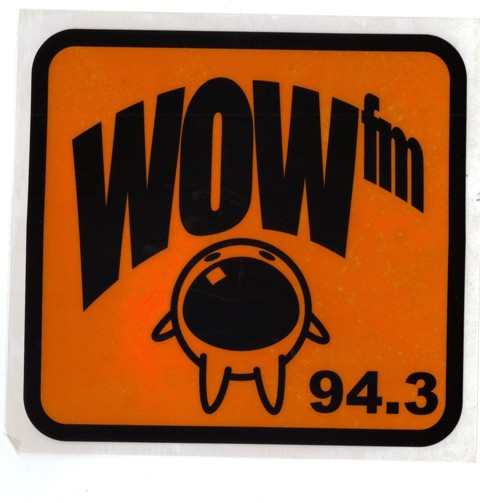
#6 WOW on the Radio
Radio stations were all about talkshows back in the days. It was WOW.FM that gave the listeners something out of the ordinary. It started as a part of Encorp Group and as a sister company to ntv7. Prior to that, it was part of Synchrosound Studios which was based in PJ, but later the station moved to the ntv7 building in Shah Alam. It was brought to another level after its relaunched in 2001 when iconic DJ Yasmin Yusoff took charge.
The station used DJs from theatrical and artistic backgrounds such as Huzir Sulaiman and Nell Ng; and also George, whom Yasmin referred to as “a character who walked a pretty thin tightrope and pushed the envelope as far as he could with the rules of Malaysian broadcasting.” George was definitely refreshing to the radio scene and probably likened to the controversial yet witty Patrick Teoh. Though his identity was never revealed, many believed George to be Jason Lo.
Yasmin also brought in local dance radio DJ Angie Ng, alternative rock DJs Kevin B and Manvir from AMP’s defunct rock station. By the time WOW.FM became a Chinese station, their English-speaking DJs had built a pretty solid following.
Sadly the station had very little if no revenue for its first year and a revamp was a commercial necessary. Yasmin noted, “It was a real heartache for all of us at the end. So much hard work all gone down the drain. I felt so bad for the DJs… I still meet people today who were our listeners, they loved our DJs and the music we played [WOW.FM had an anti-boy band policy], and that makes me very happy and proud. Ultimately a station is nothing without its listeners. It was also our very eclectic music selection which I believe people liked, we always tried to be the first.”
WOW.FM eventually became Mandarin WA.FM and subsequently, after acquisition by Media Prima Berhad in late 2005, became the Malay-language radio station known as Hot.FM.

#7 Tone Def
In terms of integrity, no other music publication has come as close to ‘telling it as it is’ than now-defunct TONE Magazine. Working on the basis that its readers deserve a quality music magazine along the lines of Q, TONE believed that it could cover anything from rock to pop to hip hop, just so long as it was intelligently pitched.
TONE started off as a free magazine for Tower Records but soon outgrew its limitations and became a retail publication in July 2000 with Roger Sanchez on its first cover. The magazine not only covered great music but films and urban lifestyles as well. Its staff were made from thinkers who were highly opinionated and defended the idea of free speech.
Among the bright young writers were Adly Syairi Ramly, who now works with Xfresh. Adly brought a backlog of experience to TONE as an underground aficionado and was instrumental in persuading and convincing TONE‘s publisher/editor Sheryll Stothard to give local bands more pages and credit where due. JUICE Editorial Director Muna Noor and JUICE Contributor Matt Armitage were also TONE founders.
TONE never shied away from controversial issues. One of the more distasteful moments in the local publishing industry was when Ning Baizura was attacked by the Malay media for her ‘honest and candid’ interview with FHM. Even though TONE was relatively new at this time, it came to the forefront of the ideological battle and defended Ning’s stance while criticising her detractors as well as the spinelessness of FHM which did nothing to defend the artiste after the issue was published.
“Granted, rock ‘n’ roll and politics goes hand in hand. Add in a former vice-president of an opposition party as the editor and a bunch of forward thinking, critical young Malaysians as the team and you’ve got a recipe for stirring sh*t, just ask Harian Metro,” related Adly.
Another contributing factor to TONE‘s edge was it willingness to fuse local content with foreign content which was mostly avoided by other local entertainment magazines at the time. “It’s the only sensible thing to do. After all if you’d been reader, you’d know that TONE was the only local music magazine that didn’t discriminate between local or foreign acts. We treat our subjects the same,” explained Adly before cheekily admitting, “Okay, I’m lying. We gave our local acts more face.”
TONE also had several successful ground events that feature live performances from bands of the day like Naked Breed, Projekt AK, Teh Tarik Crew, Flop Poppy, OAG, Prana, Lyme, Gerhana Skacinta, Koffin Kanser, Butterfingers, Herb Vendors, Spacebar, Padi and even Camelia.
When JUICE asked Adly what he considered TONE‘s greatest achievement to be, he replied: “Remember The Velvet Underground? The cliche is that not many people bought their albums during their existence but everyone who did started a band. TONE was in The Velvet Underground’s shoes to an extent.”
The esteemed publication eventually shut down in January 2003 due to lack of funding. “After trying our best to defy the odds, we had to come to terms that not enough Malaysians were reading and not many people with money believed in great content,” confessed Adly. And as a fitting end to the magazine’s 3-year run of uncensored rebel rousing, the last issue had none other than Eminem on its cover. The staff at TONE have since moved on to different media companies.

#8 Chinese Indie Roars
Unknown to the masses, the Chinese indie community had been brewing a silent storm of their own ever since Penang-based label Hwang Huo came into conception in the late 90s.
Today with bands like Nao, Deng Deng and Citizens of Ice Cream, it’s hard to deny their looming presence in the local music scene. Indeed, isolation from their counterparts in the Malay/English underground scene and mainstream has helped them crave out their own distinct personality.
But just as mainland China’s closed-door policy began to pry itself open in light of globalisation, this “sound of the local Chinese scene” was finally exposed to the masses at the Street Roar Independent Music Festivals in 2003. The events were widely hailed as the Chinese scene’s answer to Rock The World with free entrance and thousands of attendees.
Organised by the one-man show Soundscape Records, the first instalment of Street Roar was held on the eve of Independence Day at Petaling Street and featured a mix of Chinese and non-Chinese scene bands like Nao, Love Me Butch and Damn Dirty Apes. A year later, its follow-up took place at Berjaya Times Square with bands such as Furniture, Citizens of Ice Cream and Sgt Weiner’s Arms.
After a 2-year hiatus, Street Roar 3 returned with its biggest line up ever featuring foreign bands like The Subs (China), False Alarm (HK), Kazumasa Hashimoto (Japan) and The Observatory (Singapore) among others. Held at KLPAC, the festival also gave stage to a young post-hardcore outfit called Deng Deng whose vivacious set was both applauded and revered. Until today, they are the closest thing you will see on a Malaysian stage that resembles the full on decadence of the last 10-mins of stage-trashing of a band like Nirvana.
“The most important thing about Street Roar was that it gave a platform for all these bands while maintaining a fierce Asian presence (none of the foreign bands were from the Western divide). It also united the local Chinese scene with its Malay/English counterparts,” proclaimed Mak, the founder of Soundscape Records.
Although Street Roar 3 was said to be the final instalment, JUICE has gotten word from Soundscape that this year might see the return of the series. And following the tailcoats of Nao and Citizens of Ice Cream, who will be gracing the stages at the Terminals Music Festival at Taiwan soon, many are wondering who will be the next rising underground star of the hardy homegrown Chinese scene.
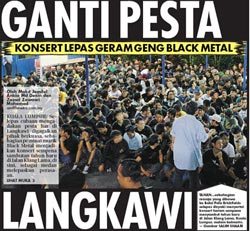
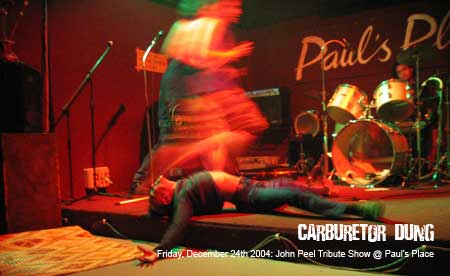

#9 The Goat Gate Scandal
Around 10:30pm on 31 December 2005, infamous underground gig venue Paul’s Place was raided by the Brickfields Police after receiving an anonymous tip-off that kids there were participating in Satanic rituals which included the drinking of goat’s blood and drug-taking. The fiasco quickly turned into a media circus with unethical reports done by several Malay tabloids.
Kids attending hardcore punk gig This Year’s Final Threat, featuring foreign bands Crystal Lake (Japan) and Force Vomit (Singapore) among other local acts, fell victim to the unlawful raid. 380 gig goers were arrested under the suspicion that they were followers of Black Metal – a subgenre of metal that fuses satanic imagery with its music.
The pure logistics of the raid itself was questionable. Paul’s Place could barely hold up to 150 patrons at a time. Most of the kids picked up during the raid were actually sitting at mamak stalls within a 100 metres radius from the venue. They were arrested for merely wearing black t-shirts.
At the Brickfields Police Station, reporters from several dailies fired questions at a group of kids selected by the police to “represent” the deviants. The police then proceeded to tear a black banner which was confiscated from the gig while proclaiming to have “destroyed the threat of Black Metal”. However, the banner was really just promoting Suicidal Clothing – a DIY t-shirt brand.
Most of the detained kids were released later that night around 5am after urine tests for drug use came out negative for 376 out of the 380 detained. The next day, several dailies reported on the incident.
Infuriated by this travesty, members of the underground and indie music community lashed back by organising their own press conference. It was the first time scenesters from each segment came together in a united cause with activists and human rights lawyers. After much publicity of the case, the official cause for the raid by the police was shifted from Black Metal to unlawful gathering to public indecency and back to Black Metal again.
Finally, after several weeks, the police department decided to cover up their Black Metal mistake by charging Paul’s Place on 4 counts: operating a pub without a license, selling liquor without a license, not having customs/import permits for the liquor and displaying the Paul’s Place signboard without getting a DBKL permit. In addition to that, some kids at the gig were charged under the printing presses act for distributing printed zines and t-shirts without the appropriate permits.
Owner Paul Millot quickly defended his stance. Paul’s Place was never a pub to start off with. It is a jamming studio and the gig that night was a private function. Most of the bands that were performing that night had jammed or practiced regularly at his place. And liquor (that is whisky, vodka, rum, etc) was never sold at Paul’s Place. There was also no signboard at Paul’s Place. You would know where it was located, if you were cool.
During the trial process that followed, the magistrate in charge questioned the police why they attended to this matter when it was clearly under DBKL jurisdiction. After several court appearances, it was determined that the police had no right to raid Paul’s Place. The magistrate ordered the police to return all of Paul’s confiscated equipment.
It was a success for Paul’s Place and the rest of the indie community. The news of this victory, however, was buried in the middle of the newspapers it appeared in, as opposed to the front page coverage received when the raid first took place, as though no one gave a bleating shit in the first place except for the kids in the scene. Internationally, the incident was reported on BoingBoing.
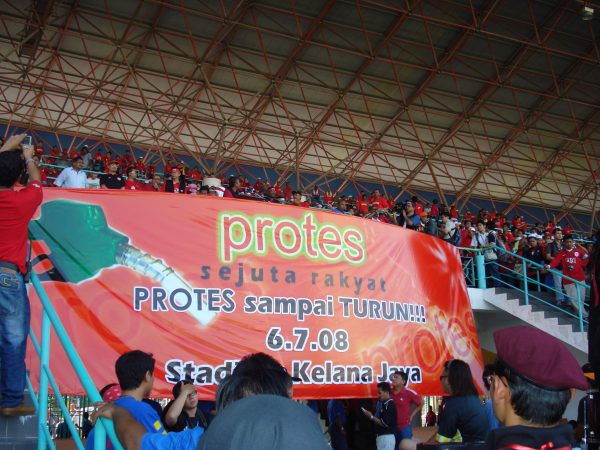
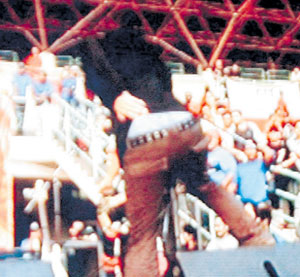

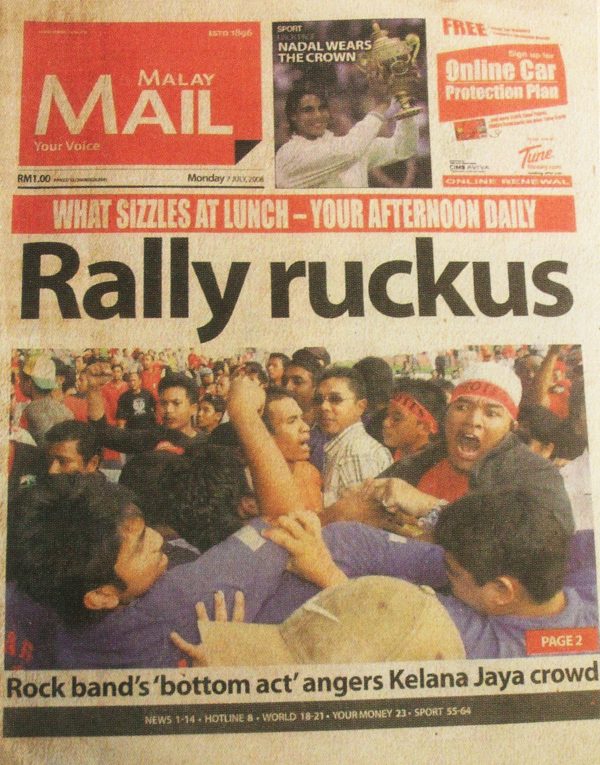
#10 Murder The Governed-man
It was supposed to be part of the entertainment at the opposition-led protest rally against the ruling government’s fuel-hike, but it quickly turned into a protest against one band.
Carburetor Dung is known in most circles as one of the pioneers and champions of the local underground punk scene. With its fierce DIY ethics and being led by ‘The Godfather of Malaysian Punk’ – Joe Kidd; the band were very aptly scheduled to perform in front of thousands of Pakatan Rakyat supporters at the rally at Stadium Kelana Jaya in July last year (2008).
Somewhere during their set, vocalist Alak flashed his boxers to the crowd as part of the routine for their song ‘Mari Nyanyi Menjilat’ (‘Come Sing Licking’). The crowd was clearly aggravated beforehand no thanks to the band’s hardcore music and crass lyrics that most of them didn’t understand.
A section of the crowd, who were mainly made up from (who else but) PAS members, hurled mineral bottles and stones at the band forcing them to stop the show. Alak was then assaulted as he descended from the stage. PKR Youth members whisked the singer out of the stadium but they were stopped outside the gate by an angry mob. They then brought the singer back into the stadium where he sought refuge underneath the stage.
Later, Alak and his bandmates secretly exited the venue, one by one. Alak sustained several bruises to his head. Activist, independent film maker and friend of the band, Hishamuddin Rais, who was in charge of the entertainment that day, made an emotional apology to the crowd saying that he did not understand the audience’s unruly behaviour towards his anak buah.
Some reports also got the title of the song wrong and called it ‘Liwat’ (sodomy) instead of ‘Jilat’ (lick). Presumably, if they got it wrong, the crowd might have made the same mistake and probably thought that Carburetor Dung was raising the Anwar issue.
Whatever the case, Carburetor Dung is unapologetic and has always been non-partisan. It would seem despite their own leanings, when it comes to music most Malaysians are set in their preconceptions. Which beckons a bigger question: Are Malaysians ready for total freedom of expression?
So how will you be celebrating Merdeka? Here are some alternate ways to get patriotic according to PKR’s Fahmi Fadzil.
Read more features here.


 Get Audio+
Get Audio+ Hot FM
Hot FM Kool 101
Kool 101 Eight FM
Eight FM Fly FM
Fly FM Molek FM
Molek FM